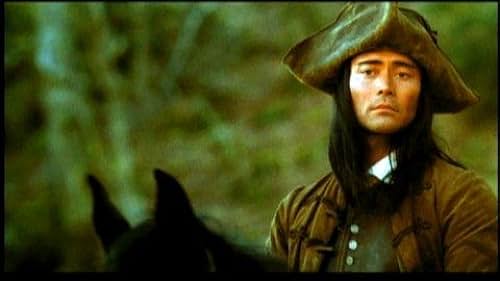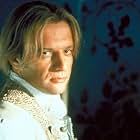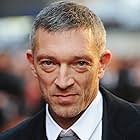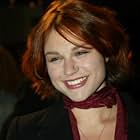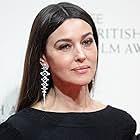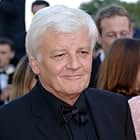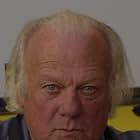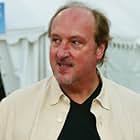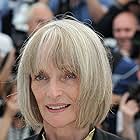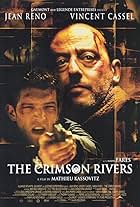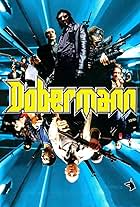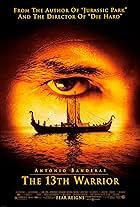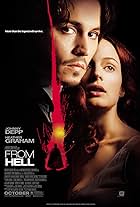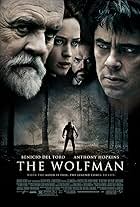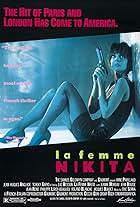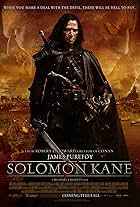In 18th-century France, the Chevalier de Fronsac and his Native American friend Mani are sent to the Gevaudan province at the king's behest to investigate the killings of hundreds by a myste... Read allIn 18th-century France, the Chevalier de Fronsac and his Native American friend Mani are sent to the Gevaudan province at the king's behest to investigate the killings of hundreds by a mysterious beast.In 18th-century France, the Chevalier de Fronsac and his Native American friend Mani are sent to the Gevaudan province at the king's behest to investigate the killings of hundreds by a mysterious beast.
- Awards
- 4 wins & 22 nominations
Jérémie Renier
- Thomas d'Apcher
- (as Jérémie Rénier)
Eric Prat
- Capitaine Duhamel
- (as Éric Prat)
Edith Scob
- Mme de Morangias
- (as Édith Scob)
Storyline
Did you know
- TriviaTo prepare for his role, Mark Dacascos learned how to ride a horse, studied Mohawk Indian culture, and became fluent in French.
- GoofsMani would not have been called a "Mohawk," even by the Chevalier De Fronsac, as this tribe had not yet been granted this official unique name. In French, he would have been called an "Agnier," "Iroquois" or simply "Indien."
- Alternate versionsThe DVD version of the film contains five deleted scenes, commented on by director Christophe Gans, that were cut from the movie for reasons of pacing or character continuity:
- An extended version of the fight sequence the opens the film between Mani (Mark Dacascos) and the highwaymen. In the extended version, Fronsac (Samuel Le Bihan) ends up assisting Mani in defeating them. In the film version, Mani fights alone.
- A raven assists Mani in finding the body of a shepherdess, the beast's most recent victim. In the film, the body is found much later on than when this scene would have led the audience to believe.
- Sardis (Jean-François Stévenin) warns Fronsac about continuing his affair with Marianne (Émilie Dequenne), saying that he doubts Fronsac has the moral character required to be with such a woman.
- A tender scene between Fronsac and Marianne on a frozen pond covered in fog.
- A scene set in La Teissier's where Sylvia (Monica Bellucci) reveals to Fronsac that the rooms in the bordello are equipped with two-way mirrors. She shows him a room where a friend of the Morangais family is involved in a bizarre sadomasochistic encounter.
- ConnectionsFeatured in Le pacte des loups - Les coulisses du tournage (2001)
Featured review
The presence of Robert DeNiro and Charles Grodin in "Midnight Run" seemed to cause many people to wildly overrate that standard action movie; similarly, the we-hate-Forrest-Gump crowd approached the quietly compelling "Cast Away" with too much prejudice to view it fairly. In "Brotherhood of the Wolf" (the English-language title of "Le Pacte des loups"), a character says that lies told in Latin can be seen as truth; the fact that this is a commercial film in French (with subtitles so you can fool yourself into feeling clever that you're watching an art movie) may explain why some are very, very enthusiastic about it. Not that the movie doesn't deserve praise (it does in a lot of ways); it's just that I wonder if they'd have been as impressed had it been the identical film shot in English and with an American cast (or with Americans other than Mark Dacascos).
Based on the French tale of a deadly creature that roamed the Gallic countryside in the 18th century and was never caught, "Le Pacte des loups" plays like a better, more coherent, more frightening version of "Sleepy Hollow," with the representative from the major city (Samuel le Bihan)and his Iroquois Indian blood brother (Dacascos) sent to investigate the gruesome goings-on, and gradually finding out there's far more than meets the eye - although unlike "Sleepy Hollow," which went overboard with the decapitations, the murders are kept to a minimum in the early going (we do see the beast attacking two of its female victims (the beast only attacks women and children) in the first half, but most of the details are kept to our imaginations... unlike later on in the movie). The movie takes its time setting the pace and mood, slipping in a few clues to the resolution - one hint: watch out for the gun - and risking losing the audience because it really is pretty methodical; but once all the main characters have been introduced, and once past the halfway point, the movie really starts to deliver.
Director/co-writer Christophe Gans leaves several narrative threads hanging, but barring a few plot holes this doesn't damage the movie's overall effect because so much stuff is woven into it; the tunnel vision of several of the characters, religious symbolism, conspiracy, a hint of incest between a crippled aristocratic hunter (Vincent Cassel) and his sister (Emilie Dequenne) that comes up in a crucial moment of the plot... provided you don't think it over too much afterwards (for starters, why does the beast not go after men?), or simply think on the movie's impressive visuals (the first fight scene and several thereafter are in slow motion, but when le Bihan launches an attack on the baddies towards the end - for reasons I won't divulge here - they come in regular speed; some of the CGI effects are a bit awkward, but the work of Jim Henson's Creature Shop is thankfully less like the Bloop in "Lost in Space" and more like their usual effective stuff, with a creature guaranteed to give you nightmares), it works just fine.
Mention should also be made of the fine score from Joseph LoDuca, no stranger to scoring uncharacteristically zesty historical stories after Hercules and Xena - his cue for our heroes going hunting and the final scene are standouts, although I could have lived without that song over the credits (sung in English, by the way); of the cast's acting, with special nods to Cassel, Dacascos, and Monica Bellucci as the prostitute who turns out to be more involved with the plot than it appears (if only American actors (and while we're at it, British ones) were as multilingual as their Continental counterparts); and of the brutal but effective fight scenes, with a particularly impressive climax. While this isn't the all-timer some say it is (that first hour IS a problem), I enjoyed it in the end; despite its reputation, French cinema has always had its accessible offerings (let's not forget it gave us "Diva," Brigitte Bardot, "La Cage aux Folles" and Luc Besson, "The Fifth Element" notwithstanding), and this is further proof.
As for Monica Bellucci naked - definitely one of the most memorable (and unlike the other ones, decidedly pleasant) moments in the movie, with Gans throwing in an amazing dissolve from Miss Bellucci's topography to that of the French mountains. For once, Jim Henson's Creature Shop doesn't contribute the most impressive bodywork to a film.
Based on the French tale of a deadly creature that roamed the Gallic countryside in the 18th century and was never caught, "Le Pacte des loups" plays like a better, more coherent, more frightening version of "Sleepy Hollow," with the representative from the major city (Samuel le Bihan)and his Iroquois Indian blood brother (Dacascos) sent to investigate the gruesome goings-on, and gradually finding out there's far more than meets the eye - although unlike "Sleepy Hollow," which went overboard with the decapitations, the murders are kept to a minimum in the early going (we do see the beast attacking two of its female victims (the beast only attacks women and children) in the first half, but most of the details are kept to our imaginations... unlike later on in the movie). The movie takes its time setting the pace and mood, slipping in a few clues to the resolution - one hint: watch out for the gun - and risking losing the audience because it really is pretty methodical; but once all the main characters have been introduced, and once past the halfway point, the movie really starts to deliver.
Director/co-writer Christophe Gans leaves several narrative threads hanging, but barring a few plot holes this doesn't damage the movie's overall effect because so much stuff is woven into it; the tunnel vision of several of the characters, religious symbolism, conspiracy, a hint of incest between a crippled aristocratic hunter (Vincent Cassel) and his sister (Emilie Dequenne) that comes up in a crucial moment of the plot... provided you don't think it over too much afterwards (for starters, why does the beast not go after men?), or simply think on the movie's impressive visuals (the first fight scene and several thereafter are in slow motion, but when le Bihan launches an attack on the baddies towards the end - for reasons I won't divulge here - they come in regular speed; some of the CGI effects are a bit awkward, but the work of Jim Henson's Creature Shop is thankfully less like the Bloop in "Lost in Space" and more like their usual effective stuff, with a creature guaranteed to give you nightmares), it works just fine.
Mention should also be made of the fine score from Joseph LoDuca, no stranger to scoring uncharacteristically zesty historical stories after Hercules and Xena - his cue for our heroes going hunting and the final scene are standouts, although I could have lived without that song over the credits (sung in English, by the way); of the cast's acting, with special nods to Cassel, Dacascos, and Monica Bellucci as the prostitute who turns out to be more involved with the plot than it appears (if only American actors (and while we're at it, British ones) were as multilingual as their Continental counterparts); and of the brutal but effective fight scenes, with a particularly impressive climax. While this isn't the all-timer some say it is (that first hour IS a problem), I enjoyed it in the end; despite its reputation, French cinema has always had its accessible offerings (let's not forget it gave us "Diva," Brigitte Bardot, "La Cage aux Folles" and Luc Besson, "The Fifth Element" notwithstanding), and this is further proof.
As for Monica Bellucci naked - definitely one of the most memorable (and unlike the other ones, decidedly pleasant) moments in the movie, with Gans throwing in an amazing dissolve from Miss Bellucci's topography to that of the French mountains. For once, Jim Henson's Creature Shop doesn't contribute the most impressive bodywork to a film.
- Victor Field
- Dec 21, 2001
- Permalink
Details
Box office
- Budget
- $29,000,000 (estimated)
- Gross US & Canada
- $11,274,610
- Opening weekend US & Canada
- $475,181
- Jan 13, 2002
- Gross worldwide
- $70,767,418
- Runtime2 hours 22 minutes
- Color
- Sound mix
- Aspect ratio
- 2.35 : 1
Contribute to this page
Suggest an edit or add missing content



